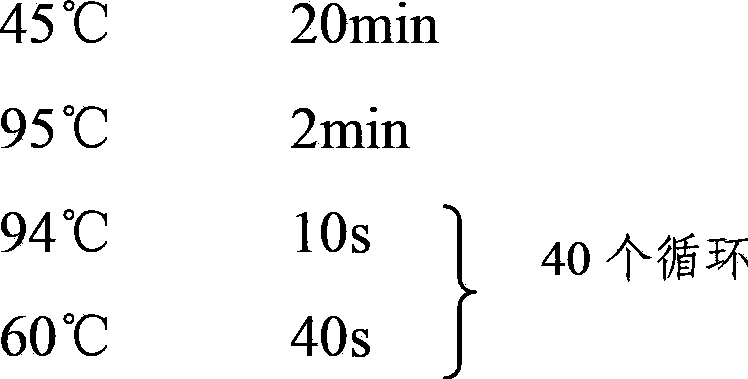Human enterovirus 71-type C4-subtype lethal strain SD095 and its application
A human enterovirus, SD095 technology, applied in the field of virology and immunology, can solve the problems of low vaccine quality, inability to fully evaluate the vaccine effect by detection means, and inconspicuous clinical effect, and achieve obvious lethal effect and virulence Strong and fast lesion speed effect
- Summary
- Abstract
- Description
- Claims
- Application Information
AI Technical Summary
Problems solved by technology
Method used
Image
Examples
Embodiment 1
[0040] Example 1 Acquisition of human enterovirus 71 C4 subtype lethal virus strain SD095
[0041] 1. Strain sample collection: Collect virus strain samples in the concentrated outbreak areas of HFMD across the country, obtain fecal or throat swab specimens aseptically according to the procedures specified in the "Guidelines for the Prevention and Control of Hand, Foot and Mouth Disease (2008 Edition)", and soak the specimens in physiological saline , and stored in -20℃ refrigerator.
[0042] Table 1 Sample information of C4 genotype EV71 strain
[0043]
[0044] 2 Isolation and passage of strains
[0045] The cells used for virus isolation are 129-generation African green monkey kidney cells (Vero) working seed batch (derived from ATCC 120-generation Vero cell seeds). for SH200500128). The source and passage history are clear, there is no exogenous contamination, and it is sensitive to EV71.
[0046] After the samples were processed, they were inoculated with Vero cell...
Embodiment 2
[0066] Example 2 Human enterovirus 71 C4 subtype lethal strain SD095 challenge protection experiment
[0067] In the present invention, the parental female mice are immunized intraperitoneally with different doses of enterovirus type 71 inactivated vaccine, and the suckling mice born to them are intraperitoneally challenged with a lethal dose of virus, and the survival rate of the suckling mice is observed to evaluate the protective effect of the vaccine, in order to determine the vaccine for human use. The immunization dose and immunization program provide the basis.
[0068] Cultivate Vero working cell seeds, inoculate EV71 virus seeds after culturing at 35±2°C for 2-5 days. After virus inoculation, inoculate the inoculated cells at 30±2°C for 10-15 days. According to the cytopathic condition, harvest the cell supernatant to obtain The virus harvest solution was inactivated by a formaldehyde solution with a final concentration of 180±30 μg / ml. Then, the inactivated solution...
Embodiment 3
[0070] Example 3 Establishment of animal lethal model based on C4 genotype EV71 virus lethal strain SD095
[0071] Detection of viral infection titer TCID of C4 genotype EV71 virus lethal strain by cytopathic assay 50 , then according to TCID 50 The test results were double-diluted, and intraperitoneal immunization was performed on suckling mice under 7 days of age, and the injection titers were 1TCID. 50 , 0.1TCID 50 , 0.01TCID 50 and 0.001TCID 50 , the injection dose is 50 μl. 10 suckling mice were immunized for each titer.
[0072] The mortality rate of suckling mice was counted after 7 days of immunization, and the results showed that 1 TCID 50 and 0.1TCID 50 All the suckling mice in the experimental group died within 7 days, and the lethality rate was 100%; 0.01TCID 50 and 0.001TCID 50 In the experimental group, 2 animals died within 7 days, and the fatality rate was 20%.
[0073]The above results show that when the virus titer is 0.1TCID 50 When immunizing suc...
PUM
 Login to View More
Login to View More Abstract
Description
Claims
Application Information
 Login to View More
Login to View More - R&D
- Intellectual Property
- Life Sciences
- Materials
- Tech Scout
- Unparalleled Data Quality
- Higher Quality Content
- 60% Fewer Hallucinations
Browse by: Latest US Patents, China's latest patents, Technical Efficacy Thesaurus, Application Domain, Technology Topic, Popular Technical Reports.
© 2025 PatSnap. All rights reserved.Legal|Privacy policy|Modern Slavery Act Transparency Statement|Sitemap|About US| Contact US: help@patsnap.com



